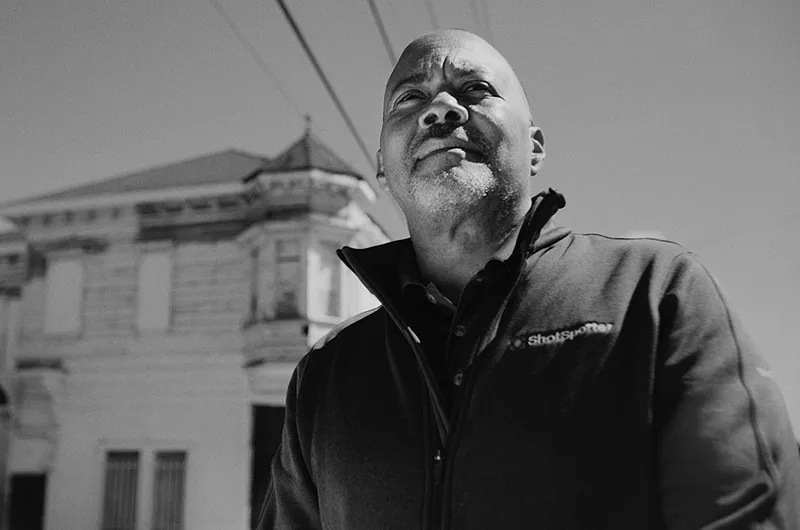Twelve major cities set homicide records this year.
And yet more than 80 percent of gunshots are not reported to 9-1-1, leaving our most vulnerable communities ignored and their sons, brothers, uncles and fathers left to die as gunshot victims when a prompt response by first responders might have saved them.
We cannot ignore this crisis. At SoundThinking™, we are proud to work at a company partnering with cities to help their police departments become more efficient, effective and equitable in fighting gun violence, enhancing public safety, and helping to save the lives of gunshot wound victims.
And while our company supports the notion of an open debate based on facts and even different opinions, we cannot ignore the recent attacks from a few selected self-appointed “abolish the police” critics. Their narrative is untethered from truth or reality and creates an unrecognizable alternate universe that ignores the reality of pain and suffering too many communities experience from unchecked gun violence. We want to set the record straight on several important issues and acknowledge the all-too-real gun violence crisis.
ShotSpotter Acoustic Gunshot Detection Simply Works
Our technology has more than 35 issued patents, and has been field validated in all manner of over 100+ municipal deployments over 20 years. Well over 95 percent of our customers renew their subscription to ShotSpotter, our acoustic gunshot detection services, and over 40 percent of the customer deployments go through at least one expansion over their customer life. Our Net Promoter Score has been consistently over +50 percent and we are often rated as the top technology vendor in our largest customers. These factors are not consistent with what the critics would want you to believe is a failed technology.
We continue to invest in the core technology platform—from sensors to firmware and cloud-based infrastructure. We also continue to refine our incident review process by rigorously training and testing the analysts in our Incident Review Centers (IRC) who listen to and use a set of tools to analyze all incidents of possible gunfire before alerting the police. Trainees are required to complete over 100 hours of coursework and pass a test in which they must correctly classify at least 90 percent of known impulsive sounds before they can even begin on-the-job training in the IRC. They must achieve and maintain 99.96 percent accuracy to complete their training and the performance of all certified reviewers is continuously monitored and training is refreshed when necessary.
We also actively monitor feedback from police departments. In 2019 and 2020, the ShotSpotter system had a 97 percent accuracy rate for real-time detections across all police departments, a figure derived directly from police department reports. That includes a 0.5 percent false positive rate (the rate at which an alert is issued to the police, but no gunshot occurred). This rate has been subjected to an independent audit that confirmed its accuracy.
Above and beyond the audit confirming ShotSpotter’s low false positive rate, SoundThinking has conducted live-fire testing of ShotSpotter in several cities across the country. Live-fire testing from Pittsburgh showed that 96 percent of shots were located within 15 meters. We published the results of this live-fire test along with the math we use to determine the location of impulsive events.
Chicago OIG Report and Best Practices
In August 2021, Chicago’s Office of the Inspector General (OIG) issued a report on SoundThinking’s ShotSpotter technology. That report did not speak to ShotSpotter’s false positive rate or assess any aspect of our accuracy. Instead, it addressed how the Chicago Police Department (CPD) uses ShotSpotter in its work to determine its value to the city. Specifically, the report focused on ShotSpotter activations that generate a “nothing to report” disposition in CPD’s database. Critics seized on this to falsely misrepresent that OIG was pronouncing that in many cases, no gunshot occurred despite the alert. This would be flat-out wrong, and even the OIG’s office has acknowledged that their report did not assess ShotSpotter’s accuracy.
Many factors could lead to the nothing to report disposition: A high number of alerts happen very late at night, with low visibility, and when witnesses cannot practicably be canvassed to confirm the gunfire. Not all gunfire leaves behind physical proof—revolvers do not eject their spent shell casings and devices called “brass catchers” can be added to guns to keep shell casings from falling to the ground. A shooter can pick up any shell casings before leaving the scene. Even when present, shell casings are small, making them difficult to spot, and eject haphazardly, which may lead them to roll under vehicles, into storm drains, or other difficult-to-find locations. And, of course, the disposition is only as good as the information provided to the database. The policies and procedures of responding to gunfire can be different from department to department. Some require more rigorous investigation and feedback. Others do not. We work hard to recommend best practices to all police departments we serve to ensure they are getting the most and best data from our system.
Numerous Courts Have Accepted ShotSpotter Evidence
ShotSpotter evidence has been used in over 200 court cases in 20 states. And courts have repeatedly concluded that ShotSpotter is reliable. Indeed, SoundThinking has overcome at least 15 Frye and Daubert challenges. ShotSpotter provides the facts about where and when guns were fired, regardless of whether the facts support a conviction or an acquittal. When ShotSpotter evidence is accepted by a court in a criminal case it is subject to examination by prosecution and defense counsel as well as the jury and is only one element of evidence. In some cases, those facts support the narrative of the defense.
For example, in Washington, D.C., a man was accused of firing a gun into the air while being chased by police. His attorney introduced ShotSpotter alert records proving that it had not detected any gunfire in the area. At trial, SoundThinking’s expert witness testified for the defense, and jurors found the defendant not guilty.
Another man was convicted of shooting an elderly man in the face, for which he was sentenced to 95 years in prison. On appeal, SoundThinking’s ShotSpotter data and expert testimony, along with other evidence, proved that the man could not have been at the scene at the time of the shooting, and the court vacated his conviction.
The Arrest of Michael Williams and Shooting of Adam Toledo
Contrary to certain false reporting, SoundThinking was not responsible for the arrest or incarceration of Michael Williams in Chicago. In fact, Mr. Williams’s arrest report does not mention SoundThinking or ShotSpotter at all. This is not surprising. The authorities decide whether to arrest someone, and the prosecutors decide whether to bring charges and prosecute. SoundThinking has no role in those decisions.
For months, SoundThinking did not even know that Mr. Williams had been arrested or that the prosecutor’s theory of the case included that Mr. Williams had shot the victim inside a car. Once we learned that, SoundThinking’s legal counsel reminded the prosecutor that we would not support the prosecutor’s theory of the case because SoundThinking’s ShotSpotter technology is only guaranteed to locate shots fired outdoors, not inside a car or building—a fact that was also contained in our forensic report provided to the prosecution.
Notably, Mr. Williams himself never disputed that the victim had been shot at the intersection where ShotSpotter identified the gunfire; he simply disputed that he had been the one to pull the trigger—something that SoundThinking could neither confirm nor deny because ShotSpotter identifies gunfire, not people. ShotSpotter technology has no way of determining the identity, name, race, age, sex, or motivation of an alleged shooter.
There have also been unfounded accusations that the technology has incited officers to arrive on scene and act aggressively, but there is no evidence to support that police respond to ShotSpotter alerts any differently than to 9-1-1 calls for gunfire. This originated from the case of 13-year-old Adam Toledo in Chicago where ShotSpotter correctly detected and alerted on nine rounds of gunfire around 2:00am along with two separate 9-1-1 calls from concerned citizens. When police officers appropriately responded to the scene where the shots were fired, they found Adam and his adult associate. This led to a foot chase and confrontation. The unarmed adult was apprehended. It was later confirmed through press reports that the gun Adam was in possession of when he was shot and killed was the weapon used in the nine-round shooting. This was a tragic outcome, but there is nothing about the alert that changed the pattern of behavior.
ShotSpotter Saves the Lives of Gunshot Wound Victims
We will end on perhaps the most important yet under-appreciated aspect of our work which is how we contribute to saving lives. In April 2021 in Chicago, ShotSpotter swiftly alerted Officer Rhonda Ward and Officer Julius Givens to the location of a 13-year-old boy who had been shot while walking home. The officers put the child in their squad car and rushed him to the emergency room. He survived his injuries due to the swift treatment he received. If ShotSpotter had not alerted police to the shooting, the boy might not be alive today.
In 2020, we helped save the lives of 101 people in Oakland, California with ShotSpotter. Notably, not one of the incidents was reported to 9-1-1.
These aren’t isolated examples. If you check your Twitter feed or local media reports in the cities in which we operate across the United States, you will see daily examples of how our technology plays a role in saving lives.
In fact, researchers at Cooper University Health Care in Camden, New Jersey found that ShotSpotter helps first responders reach victims of gun violence faster by several minutes. To save the life of a gunshot victim, every second counts. By decreasing response times, ShotSpotter saves lives.
Conclusion
Even as critics try to sow doubt and confusion in the media about our company and our contribution to combating gun violence, we remain clear-eyed about our mission. The truth and facts support our value to public safety, and we’ll continue to carry out our mission to support cities and police departments as one part of their overall strategy to improve public safety.



